
Car safety is one of those things that many people don’t give a passing thought to. But if your life or the life of someone you care for has been touched by a car accident, or if you’ve read this blog before, you know that car safety affects all of us. And the more informed we are about the various elements of car safety, the more likely we are to be able to keep our loved ones safe.
As a result, I’ve written dozens of articles on car seat safety, how to choose safe vehicles, and which safety factors are important when selecting new vehicles or vehicles for teenage drivers. However, not everyone is in the market for new cars, and it’s important to know how to choose wisely when looking for safety in older vehicles. That’s what this article is about. By the end of it, you’ll hopefully have a better idea of where to compromise and where not to when buying a safe used car, SUV, or minivan for yourself or for your family.
How old is too old when looking for a used car, SUV, or minivan to keep my family safe?
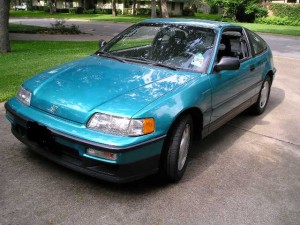
If you’re simply interested in a low total cost of ownership, driving a subcompact or compact Honda or Toyota from the 1990s is currently your best bet for spending the fewest dollars per mile in maintenance, repairs, and fuel economy. The Honda CRX-HF, for example, was rated at 51 mpg highway, which is competitive with the best gasoline vehicles (and hybrids) on the market today.
However, if your priorities are not only price of purchase and price of upkeep but safety, then you’ll need to spend time both researching and reflecting: researching the differences between vehicles and reflecting on your personal thresholds for risk tolerance. Why? Because the short answer to the “how old is too old?” question is…
It depends. But I don’t mean it depends on the age of the vehicle or the year in which it was made.
So what does it depend on?
It depends on what you consider important, safety-wise, and what you’d be willing to live (or die) without. And because different vehicles included these important features at different times, going by the age of a given vehicle won’t be enough to say whether it’s good enough or not.
To put it another way, there are different levels of safety features, and each person is likely to have a different threshold of comfort. This comfort level might even vary within families or stages of life; many husbands and fathers are willing to drive older vehicles they’d never let their wives or children drive in, for example. Similarly, a parent choosing a vehicle for a teenager (or a young adult buying a vehicle after obtaining a post-college job) might care about safety features centered on the driver but not on features for back-seat passengers.
We’ll start with what I’d consider an absolute baseline level of safety and work up from there, and I’ll provide “driver-focused” and “family-focused” examples at each level.
Safety Level 1: Frontal driver / passenger airbags and lap / shoulder belts and good moderate overlap frontal crash score
For me, a vehicle with lap and shoulder belts and frontal airbags for both the driver and passenger and a good frontal crash score as measured by the IIHS is the minimum acceptable threshold for a roadworthy vehicle. This, by the way, rules out motorcycles and scooters in my book; they travel at car-like speeds but offer no protection (some motorcycles do offer airbags, but without a restraint system and a passenger cabin, they’re far less effective than car airbags in preventing deaths).
The rationale behind stopping here is that seat belts with lap and shoulder components have been shown, per the IIHS, to reduce fatal injury risks by 45%. When frontal airbags are combined with lap and shoulder belts, the likelihood of death in frontal crashes drops by 51%. To put it another way, imagine 10 high speed (e.g., 40 mph+) head on collisions (so 20 vehicles and 20 drivers involved in total). Let’s say 10 vehicles involved did not have frontal airbags, and furthermore, their drivers were unbelted, while in the other 10 vehicles, frontal airbags were present and all drivers were belted. Statistically speaking, we’d expect all 10 unbelted/unairbagged drivers to die, as well as 5 of the belted/airbagged drivers. However, we’d expect the remaining 5 belted/bagged drivers to live. If the odds seem gloomy here (after all, 15 of the 20 people in this scenario are dead), realize that 50% (the odds of the belted/bagged group) is still much, much, much higher than 0%.
You might wonder why I don’t just advocate vehicles with lap and shoulder belts as my baseline, given that the lion’s share of risk reduction comes from the belts, and not from the frontal airbag. That’s a great question. The reasons I insist on the airbags as well are because 1.) they do also provide a smaller but significant fatality risk reduction (~21%) for unbelted passengers, and 2.) being a relatively newer technology (they weren’t mandated in the US until the 1999 model year), vehicles that include them are also likely to include better crash structures and score better on crash tests, which provides an additional plethora of safety benefits. A 1995 subcompact with frontal belts and airbags (e.g., a Toyota Tercel) will offer far, far more protection than a 1975 or 1985 subcompact with frontal belts. Remember that seat belts have been mandated since 1968, and there have been a number of changes and improvements in car safety design since then.
Finally, I add the requirement of a good moderate overlap frontal crash score as measured by the IIHS because, per the IIHS, even after controlling for differences in driver age, gender, and vehicle weight, drivers of vehicles rated as “good” were 74% less likely to die in head-on collisions than drivers of vehicles with “poor” ratings. The risk reduction for drivers in “acceptable” and “marginal” rated vehicles was still 45%. To put it simply, the frontal overlap test is strongly predictive of crashworthiness in real life multiple vehicle crash scenarios.
With explanations out of the way, here are examples of the oldest and safest, relatively speaking, driver-focused and family-focused vehicles that meet this threshold. The earliest was available from from 1994, while the latest became available in 1998.
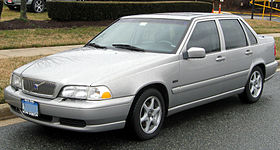 1994-2000 Volvo 850 / S70
1994-2000 Volvo 850 / S70
The 850 (renamed the S70 in 1998) is a great example of a safe car from the 1990s. It features seat belts in all positions, a good frontal moderate overlap crash score, and frontal airbags for driver and passenger. It comes with antilock brakes as a standard feature and daytime running lights from 1995 onward. It also made front seat side torso airbags standard from late 1996 onward and made a combination front seat head/torso airbag standard from 1999 onward (a feature I’ll discuss in a higher safety tier soon). In other words, if you’re looking for a good driver-focused or family-focused car, the 850 / S70 is a great place to start from 1994 onward.
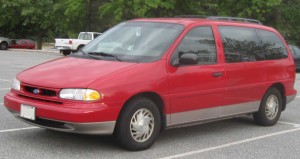 1995-1998 Ford Windstar
1995-1998 Ford Windstar
The 1st generation Ford Windstar is a great choice for large families interested in safety on a budget; it features dual airbags (remember; these weren’t required until the 1999 model year), frontal seat belts, and a good frontal crash score. It also seats 7 with seat belts in all seating positions. Finally, antilock brakes are standard. It’s worth noting, however, that there were a number of reliability issues with the Windstar, particularly with the 3.8L models.
Additionally, this generation of the Windstar (in particular, 1999-02) was estimated to have a driver death rate of 41 by the IIHS.
The Taurus is a simpler, but also good example of a solid individual or family car from the 1990s. It has the standard features common to this safety level: seat belts in all positions, a good frontal crash score, and dual front airbags. It’s also considerably roomier inside than the 850/S70, although it doesn’t have nearly as many additional safety features.
It’s worth noting that this generation of the Ford Taurus (in particular, 1999-02) was estimated to have a driver death rate of 82 by the IIHS, which is considerably higher than the driver death rates of any of the other vehicles on this list for which figures were available.
My 3 across guide for the Taurus is available here.
The BMW 5 Series is the second luxury car and first and only large car to appear on this list. Like the 850/S70, it’s an excellent choice for individuals and families because it packs a number of additional safety features in at this price point, including front seat torso airbags in every year and the addition of front head tubular airbags from 1998 onward. ESC, another coveted safety feature, became standard from 2000 onward. Antilock brakes and DRL were also standard in every year. The main drawback to the 5 Series, and to every BMW, is the cost of upkeep. They can be expensive to keep running, although they can be a bargain if you can afford to.
This generation of the 5 Series (in particular, 1999-02) was estimated to have a driver death rate of 38 by the IIHS.
My 3 across guide for the 5 Series is available here.
The 1st generation Toyota Sienna is another excellent family-focused choice, and is my preferred choice of the various vehicles I’ve profiled here due to its reliability and low maintenance costs. Like the Windstar, it features 7-person seating, front airbags, seat belts in all positions, and a good moderate overlap crash score. While there were some reliability concerns with engine sludge, there are plenty of 1st gen Siennas still running with more than 300,000 miles on the odometer, making it a great option for families with relatively small budgets (they are often available for $3000 private party) who want as much safety and reliability as possible.
This generation of the Sienna (in particular, 1999-02) was estimated to have a driver death rate of 32 by the IIHS, which was lower than any other vehicle on this list.
My 3 across guide for the Sienna is available here.
As you can see, there are a number of safe vehicles from the 1990s with essential features like good frontal crash scores, seat belts, and frontal airbags. However, as I’ve noted, this is the most basic level of safety I’d consider for individuals or families. I’d personally feel much more comfortable placing my loved ones in vehicles that at least met my threshold for Safety Level 2, which I’ll discuss further in a post in the near future.
If you find the information on car safety, recommended car seats, and car seat reviews on this car seat blog helpful, you can shop through this Amazon link for any purchases, car seat-related or not. Canadians can shop through this link for Canadian purchases.

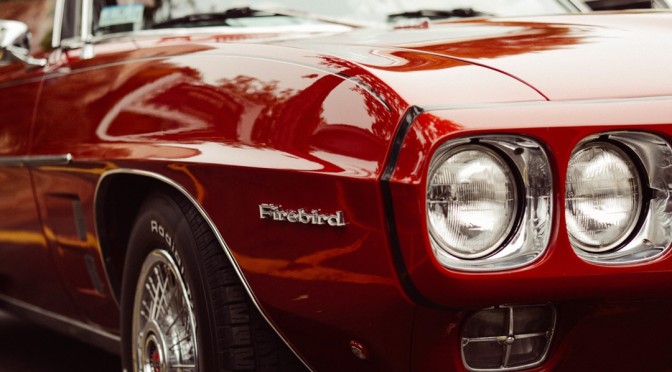
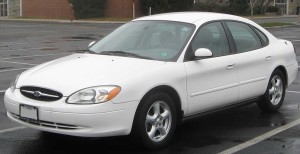
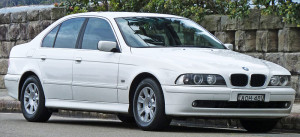 1997-2003 BMW 5 Series
1997-2003 BMW 5 Series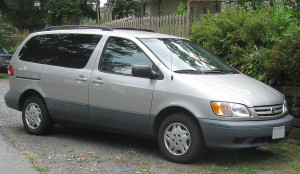 1998-2003 Toyota Sienna
1998-2003 Toyota Sienna